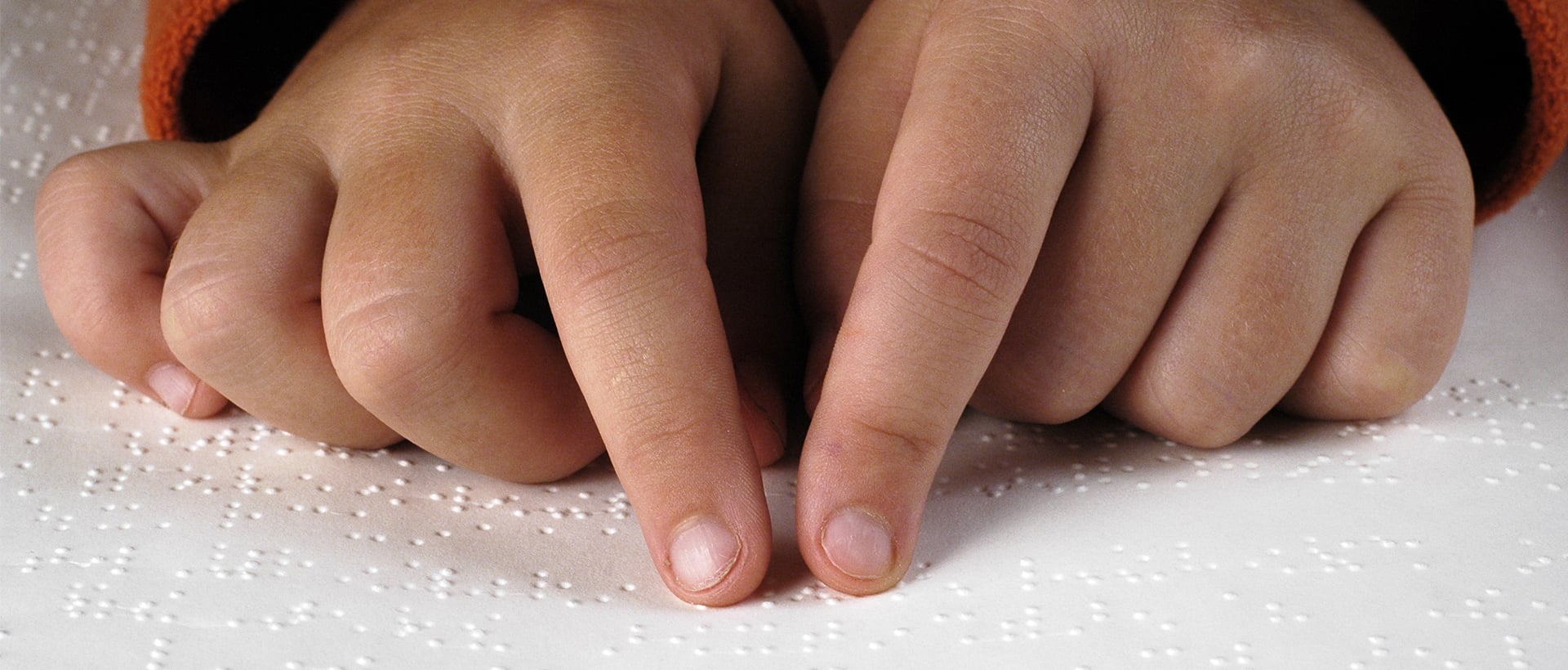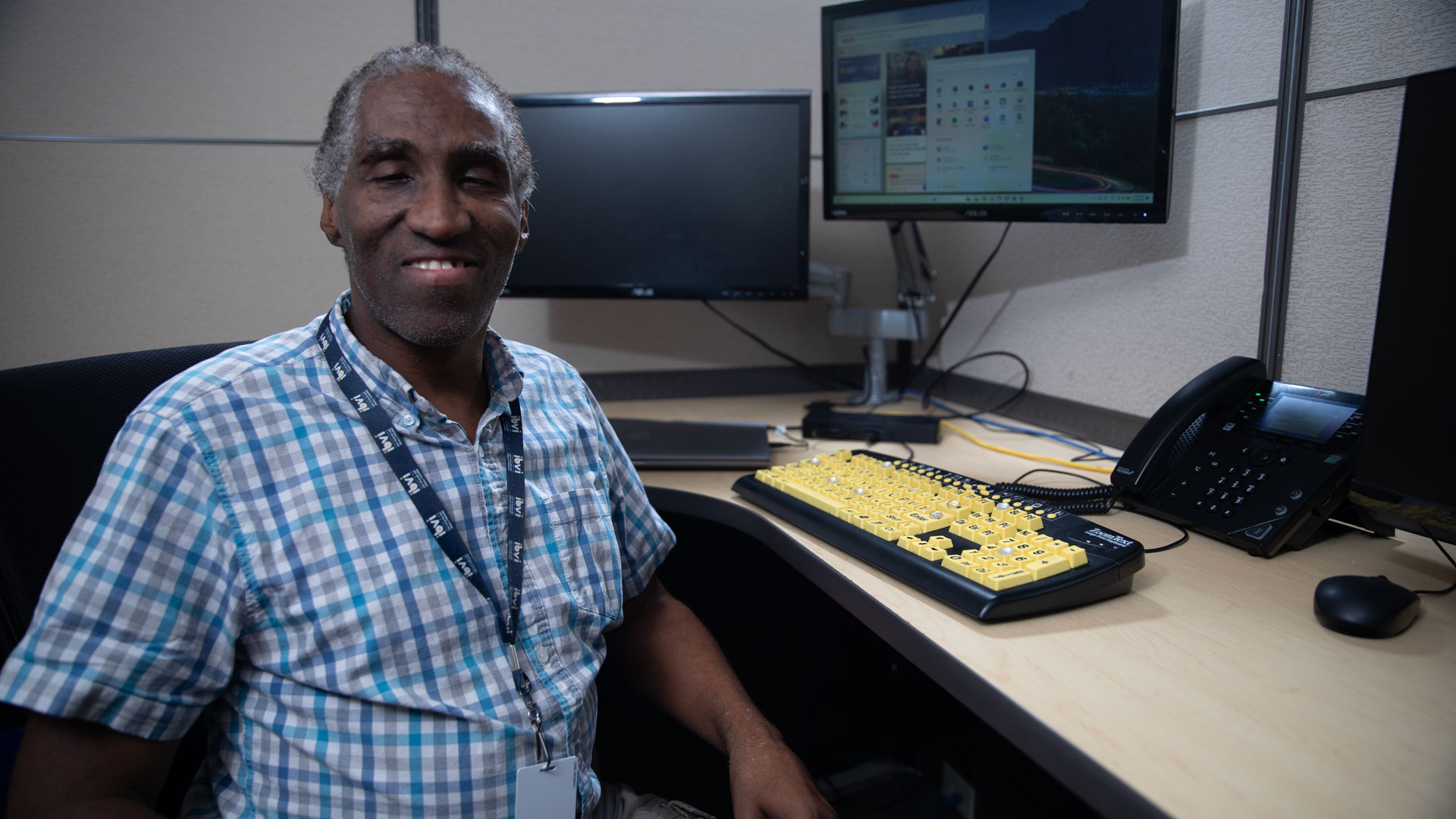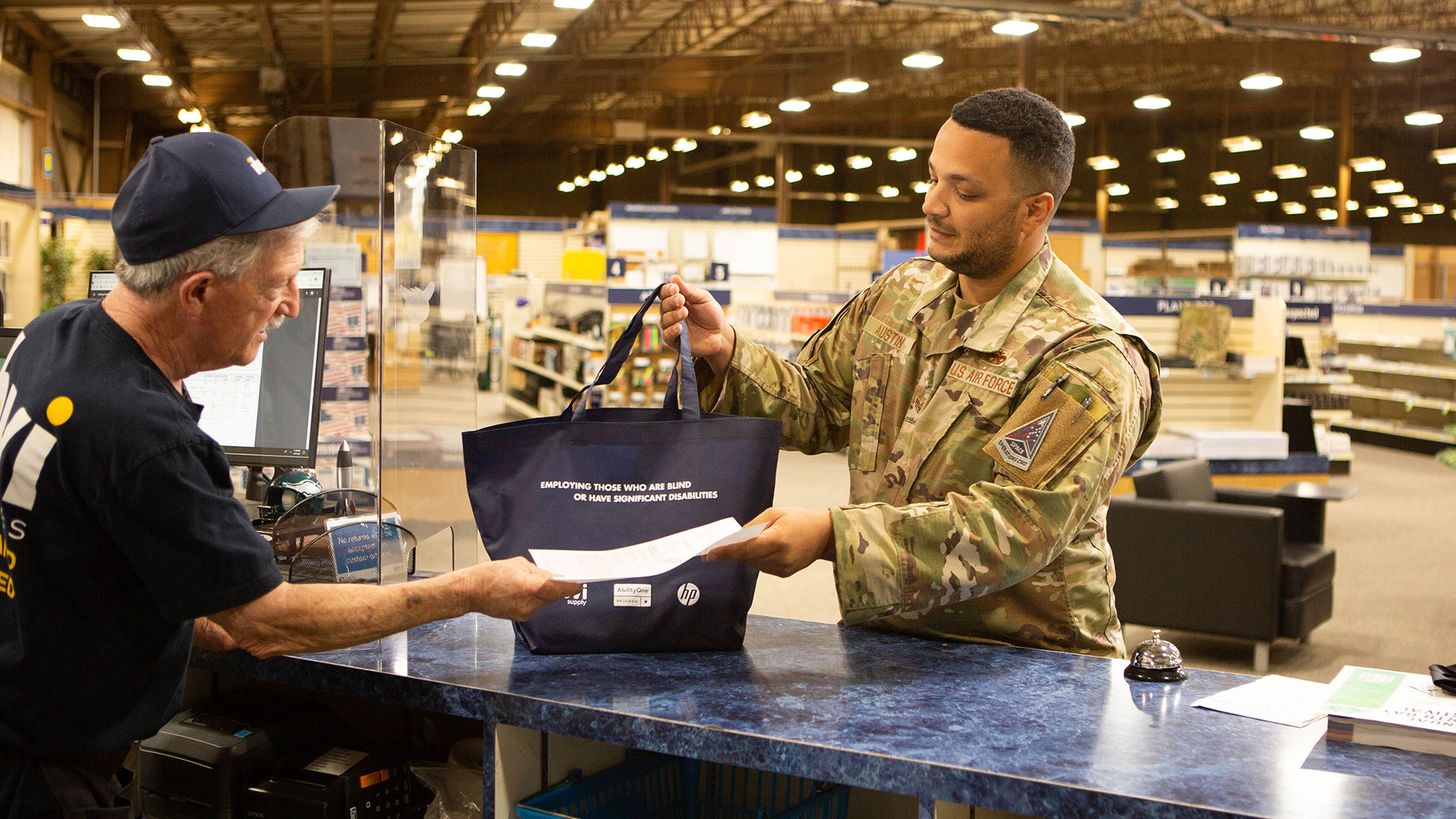In honor of Braille Literacy Month, let’s look at the importance of Braille in our world today.
What I Knew Before
Growing up, I was intrigued by the raised dots I’d see on elevators and signs. That was my first exposure to Braille. For many years, I assumed that most sighted people were like me—they knew what Braille is and what it’s used for, and that’s about it. I also assumed that everyone with a visual impairment knew how to read Braille. I’ve come to understand these as misconceptions—and Industries for the Blind and Visually Impaired (IBVI) has taught me a lot about common misconceptions surrounding those with visual impairments. With January being Braille Literacy Month, I wanted to find out more about Braille and learn about its place in the fast-moving world of technology.
What I Learned
By definition, literacy is the ability to read and write, but there’s obviously more to it. For some, reading may not be with their eyes and writing may not use an alphabet most are familiar with. Patricia Stock, Professor Emerita at Michigan State University, put it like this: “Literacy is the ability to use available symbol systems that are fundamental to learning and teaching—for the purposes of comprehending and composing—for the purposes of making and communicating meaning and knowledge.”
If you don’t know a lot about Braille, it might seem somewhat useless, given the vast amount of technology that can read and write for you. Because, after all, using that technology would make you “technically” literate, right? Not exactly. Yes, advances in technology have offered the blind and visually impaired several ways to communicate, but at the end of the day, it can’t replace the ability to read and write. Think about it this way: Do sighted people still need to be able to read and write to live successfully, even with all the fancy new technology?
I think most people would argue that they do.
Braille is still important in today’s age of technology. Here’s why: The American Printing House for the Blind, which polls each state for data on children between the ages of four and 21, estimates that 62,528 legally blind children are attending public schools or publicly run programs in the United States. Of those students, only 8.2 percent identify as Braille readers—that’s less than 6,000 children, and this number has not changed much since 2009.
This became even more alarming to me as I continued to research and found that in 1960, over 50 percent of students were literate in Braille.
Illiteracy leads to higher numbers of unemployment among people with disabilities and contributes to problems in the workplace. The U.S. Department of Labor has cited literacy problems as costing $225 billion or more in lost productivity, injuries, and mistakes within U.S. businesses.
But after all of these stats, my biggest takeaway is this: people who are blind or visually impaired should be given the same opportunities as those who are sighted, and that means having the tools and education it takes to become literate. And this brings me to the conclusion that we shouldn’t let Braille become a lost form of communication. Because, if you ask me, no amount of technology is going to take the place of being able to read and write on your own. There are some situations, like the elevator signs I mentioned at the start of this blog, where technology won’t help.

What We Can Do
For starters, we can talk about the importance of Braille and voice the need for it in the education of blind and visually impaired youth and adults. Technology should assist Braille—not replace it. Schools and communities should make Braille instruction and materials easily accessible, as well as having mentors and outreach programs available.
According to a 2009 study from the National Federation of the Blind, there is a shortage of teachers who are qualified to teach Braille. One of the bigger issues with Braille education is that there is no national consensus on what it means to be certified to teach Braille. Requiring that all Braille teachers pass the National Certification in Unified English Braille (NCUEB) exam would ensure their competency and fluency in the literary code and keep it consistent across the board.
Braille Literacy Month has taught me that those little raised dots that were so intriguing to me as a child are more important and valuable than I ever knew.
To learn more about Braille Literacy Month, visit:
http://www.pathstoliteracy.org/blog/celebrate-braille-literacy-month


